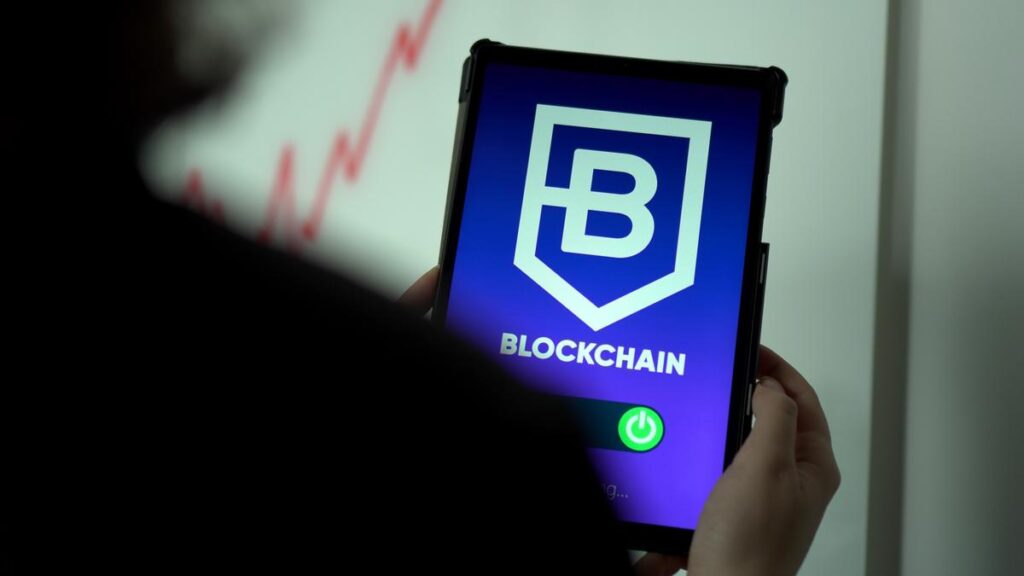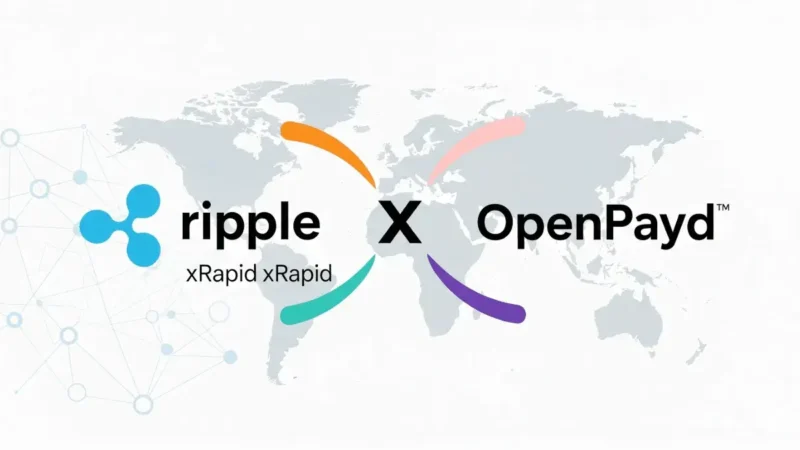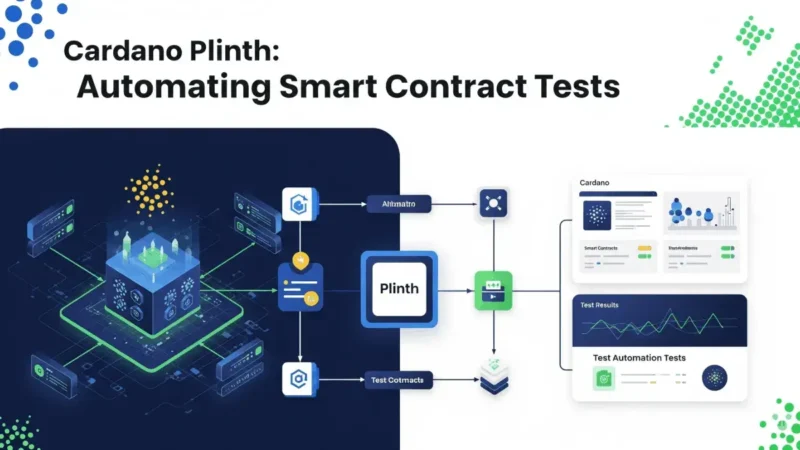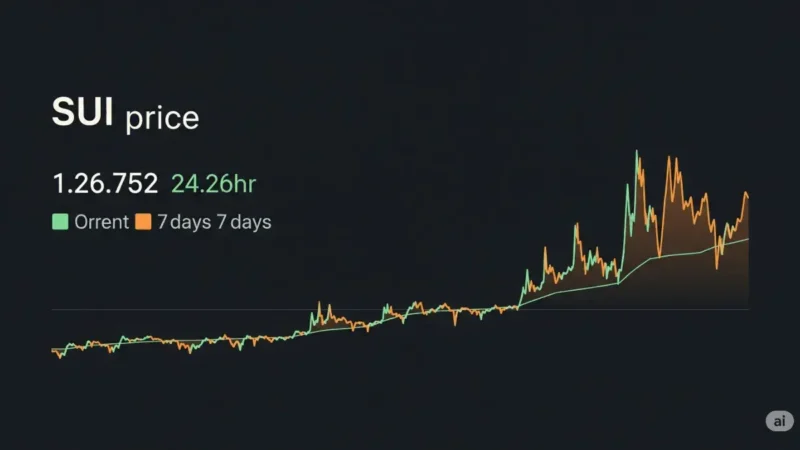Exploring the World of Blockchain Technology
As we are standing on the brink of the fourth industrial revolution, understanding the nuances and possibilities of emerging technologies is utmost important. A technology that has been making waves in multiple domains is Blockchain. Starting out as an obscure concept popular mostly within small web forums, blockchain technology has catapulted into the limelight with vast applications ranging from finance to supply chain management. Our objective is to delve into the intriguing world of blockchain, discussing its rudimentary concepts, narrating its history, identifying key applications, exploring its future potential and finally, guiding you through ways to get involved with this revolutionary technology.
Understanding the Basics of Blockchain
What is Blockchain?
Blockchain is a digital, decentralized technology that records all transactions across a network of computers. It provides an immutable, secure record of transactions, ensuring transparency and reducing the threat of fraud. In essence, a blockchain is a continuously growing list of records or blocks, each containing a cryptographic hash of the previous block, a timestamp, and the transaction data. This growing list of interconnected blocks forms the blockchain.
Decentralization: A Key Aspect of Blockchain Technology
One of the defining traits of blockchain technology is its decentralization. This is contrary to a centralized system where a single entity, like a bank or government, holds control. In a decentralized or blockchain system, control is distributed evenly across the network. This means that no single entity has total control over the entire blockchain, rather, all participants in the network share control. Each participant, also known as a node, has a copy of the entire ledger, helping to maintain its integrity and resilience.
Transparency: Another Essential Trait of Blockchain
Transparency is another hallmark character of blockchain technology. Since each participant in the blockchain network has access to the whole ledger, all transactions made are visible to everyone within that network. This means that every transaction can be tracked, creating a transparent and open system. Such transparency ensures accountability, decreasing the likelihood of fraudulent activities.
Understanding Immutability in Blockchain Technology
The term “immutability” in blockchain technology refers to the fact that once data is written into a block, it can’t be changed, deleted, or tampered with. Each block, once filled with transactions, is given a digital signature known as a hash. Any changes to the data inside a block would alter that hash, making it evident that the block has been tampered with. This essential characteristic of blockchain provides an additional layer of security to all transactions that occur within the blockchain network.
Why Blockchain Technology is Revolutionary
The advent of blockchain technology brings with it the potential for a radical shift in the way transactions are undertaken, especially in the areas of banking, law, and decentralized digital money – such as Bitcoin. Its decentralized, transparent, and immutable nature ensures the integrity of transactions, bypass the need for third-party intermediaries, and provide—more than ever before—a level of trust in the digital world.
Blockchain technology may initially seem complex, but fundamentally, it involves a novel type of internet where digital data is both distributed and safeguarded from alteration or duplication. Gaining an understanding of blockchain technology, therefore, is not solely for tech enthusiasts but is increasingly relevant to the wider public.

The History and Evolution of Blockchain
The Genesis of Blockchain: The Principle Underpinning Bitcoin
The origins of blockchain technology can be linked to distributed computing paradigms and cryptography techniques. However, it was Bitcoin’s innovative deployment of these concepts that pushed blockchain technology into the spotlight. In 2008, a white paper titled “Bitcoin: A Peer-to-Peer Electronic Cash System” was composed by the enigmatic Satoshi Nakamoto. This paper introduced the idea of a digital currency – Bitcoin – which would offer decentralization, transparency, and security, independent of any financial or government institution.
Integral to Nakamoto’s innovation was the blockchain protocol responsible for maintaining a public record of all transaction data related to bitcoin usage. This protocol records key details, such as the timestamp of the transaction, addresses involved, the transaction’s value, and the digital signatures of the involved parties.
Early years: Known Only for Bitcoin
The early years of blockchain are largely synonymous with Bitcoin. Post the implementation of the Bitcoin protocol in 2009, Bitcoin began gaining some momentum among a select group of enthusiasts. Despite its usability and revolutionary features, Bitcoin, and thereby its underlying technology, Blockchain, remained largely unnoticed and misunderstood.
Expanding Horizons: Birth of Alternative ‘Coins’ and Applications
Around 2011, blockchain technology got its first big breakthrough as several alternative cryptocurrencies, or ‘altcoins‘, began to emerge. These altcoins essentially picked up the open-source Bitcoin protocol, tinkered with it, and rolled out new cryptocurrencies. From Litecoin to Ripple and Ethereum, new forms of cryptocurrencies spawned and the scope of blockchain expanded.
Among these altcoins, Ethereum introduced a concept that shook the landscape: Smart Contracts. These digital contracts, powered by Ethereum’s blockchain, allowed for more complex transactions and led the technology towards non-financial uses. Smart contracts could validate any kind of agreements and monetary transfer based on the fulfillment of the conditions encoded in them.
Blockchain 2.0: The Rise of Decentralized Applications
With the advent of smart contracts, the world started warming up to the idea of ‘Blockchain 2.0’ — a broader use of blockchain beyond just a means of currency. Ethereum pioneered the world of Decentralized Applications (DApps). DApps are essentially applications built on a blockchain that execute smart contracts to function.
This led to a mistrustful world beginning to recognize the profound potential of blockchain technology. From healthcare to supply chain and education to voting systems – the use-cases have evolved vehemently over the years.
Blockchain: The Ever-Evolving Landscape
The technological realm has been witnessing great leaps over the last few years with the advent and evolution of blockchain systems. Various unique blockchain networks like Hyperledger, Corda, and a plethora of others have emerged, each bringing their distinctive attributes to the table.
The Bitcoin community has seen plenty of internal conflicts, birthing offshoots like Bitcoin Cash, and instigating both Initial Coin Offering (ICO) frenzy and subsequent market crashes. Noteworthy instances like Ethereum’s grappling with scalability issues, growing acceptance of blockchain and cryptocurrency by regulatory authorities are some significant aspects of blockchain’s evolution in modern times.
Initially perceived merely as a façade for confidential deals, blockchain technology is now recognized as a game-changing mechanism with the potential to upend entire industries. Coming a long way from its inception, blockchain has faced a roller coaster journey of volatility, scalability hurdles, compliance issues, and misunderstanding. Still, its potential in unraveling a whole new avenue of prospects and fundamentally altering facets of our lives is quite evident.

Key Applications of Blockchain Technology
Blockchain in Decentralized Finance (DeFi)
In the era of technological advancements, blockchain’s role in decentralized finance, commonly known as DeFi, is an innovation worth noting. The decentralized nature of blockchain is redefining the financial systems in ways that traditional banking could never accomplish. As it suggests, DeFi eliminates the requirement of intermediaries in financial transactions, enabling a secure, efficient, and inclusive environment. For instance, the existence of banks in financial transactions can be by-passed with blockchain, enabling a direct peer-to-peer system of lending or borrowing. Additionally, the use of smart contracts in blockchain ensures automated, secure, and transparent procedures like loan repayment.
Blockchain in Healthcare
In the world of healthcare, blockchain technology is considered highly transformative. It can drastically improve data sharing between healthcare providers, resulting in more effective treatments and a higher degree of patient empowerment. A variety of health records could be stored in a decentralized manner, with patients having full control over who has access to their information. This way, doctors and hospitals could request access to a patient’s medical history, and the patient would have the decision making power. This not only improves efficiency by reducing administrative time for health providers, but also improves privacy for patients.
Supply Chain Management
Implementation of blockchain technology in supply chain management can significantly boost transparency, traceability, and efficiency. Since information on a blockchain cannot be altered retroactively without altering all subsequent blocks, it enables participants to track goods from production to delivery with an unprecedented level of accuracy. For instance, a grocery store could trace back the seafood on its shelf back to the fisherman who caught it, or a fashion brand could verify if the supplier’s claim that the wool used in their clothing line is indeed ethically sourced. This reduces fraud and enables businesses to provide a higher level of detail and assurance to their customers.
Blockchain Technology in Voting Systems
Another promising application of blockchain technology is in voting systems. It provides a transparent, more secure and efficient means of casting, tracking, and counting votes. It accomplishes this by creating an immutable ledger of votes cast, which effectively prevents vote tampering or fraud. Additionally, the use of blockchain could drastically reduce the costs and resources needed for conducting secure and transparent elections. The city of Moscow, for instance, already trialed a blockchain voting system in 2019.
Blockchain in Real Estate
In the realm of real estate, blockchain could simplify and expedite the process of buying and selling property. By securely recording and verifying property rights, blockchain can eliminate the need for costly and time-consuming title searches. Blockchain could make real estate transactions much smoother by using smart contracts that automatically execute a transaction once conditions are met. This would not only save time and reduce paperwork, but also prevent fraud by providing a transparent record of who owns what property.
Blockchain in Energy Sector
Blockchain technology is also being used to create decentralized energy markets. In these systems, individuals who generate their own power through solar panels or other methods can sell their excess energy to their neighbors, without needing to go through a traditional utility company. This can lead to more efficient and sustainable energy usage. Companies like Power Ledger are exploring these peer-to-peer energy markets, creating a new, more inclusive energy economy.
The Intersection of Blockchain and Intellectual Property (IP)
Blockchain technology presents a unique and innovative solution to real world problems such as copyright infringement in the realm of intellectual property (IP). The potential to irrefutably establish the ownership of intellectual property is made possible by the transparency and immutability of the blockchain. This technology timestamps and hashes IP data within the chain, providing clear proof of ownership. Furthermore, employing blockchain techniques means that whenever the creators’ work is utilized, they receive royalty payments promptly and transparently through “smart contracts”.

Photo by theothermorthy on Unsplash
The Future of Blockchain Technology
The Ongoing Evolution and Applications of Blockchain Technology
While blockchain is renowned as the backbone to digital currency transactions such as Bitcoin, it offers much more than just this. The possibilities are, in fact, potentially game-changing for various sectors beyond financial services. As a decentralized mode of managing and recording transactions or any digital interaction, blockchain ensures a high-level of security, transparency, auditability, and can withstand outages, putting it on the frontline of technological evolution.
By bringing about an innovative level of trust in documenting transactions, identity verification, and maintaining data integrity without the need for intermediaries, the potential applications of blockchain technology abound. Imagine a future where casting votes in general elections could be done online, or secure transactions involving property or other legal documentation are almost effortless, rendering expensive service providers unnecessary. These scenarios and others could soon become realities, reflecting the transformative power of blockchain technology in society.
Consensus Mechanisms & Scalability
The consensus mechanisms used in blockchains have inherent scalability issues which currently limit the number of transactions that can be processed— a key factor inhibiting widespread adoption of the technology. However, experts are investigating new methods of achieving consensus that could reduce these limitations.
One of these alternate methods is Proof of Stake (PoS). PoS tackles the scalability issue by avoiding the energy-intensive process of adding blocks to the chain. Instead of having miners compete to solve complex mathematical problems (Proof of Work), a node is selected to add the next block based on its stake, or the amount of digital currency that it holds.
Shaping the Future of Blockchain
As development of Blockchain technology continues, we will likely see greater interoperability between different Blockchain networks. This could open up the possibility for a connected network of different blockchains, each utilizing their inherent strengths to enhance the overall capability of the system—an idea known as the internet of blockchains.
On another front, Blockchain could play a vital role in establishing a digital identity system, offering a secure and efficient method for individuals to identify themselves online. This system could potentially offer solutions for various identity-related issues such as fraud and identity theft.
Challenges Faced by Blockchain Technology
However, Blockchains still face several significant challenges. The complexity of the technology, combined with the lack of regulations and clear standards, are all factors impeding its wider adoption. Legally, blockchain ventures also face challenges, particularly because it’s a global technology and different jurisdictions have starkly different regulations.
Concerns around the energy consumption of several blockchain projects—particularly those using proof-of-work consensus mechanisms—are another hurdle for the industry. The perception of blockchain being linked to illicit activities due to its association with cryptocurrencies is another challenge affecting its acceptability.
The revolutionary aspects of blockchain technology, including decentralization, transparency, security, and optimized efficiency, have the capability to drive transformative shifts across multiple industries. This innovative technology hints at a future where all digital transactions and interactions are secure, transparent, and free from intermediaries.

How to Get Involved with Blockchain
Deciphering Blockchain Technology
At its core, blockchain technology represents a decentralized method of storing information in databases. These databases, known as ‘blocks’, are interconnected to form a ‘chain’. The design of this technology is inherently robust, providing resistance against data alterations thanks to its distributed nature. The most notable application of blockchain has been in the domain of digital currencies, such as Bitcoin.
Educate Yourself About Blockchain
To get involved in the blockchain space, the first step is to educate yourself about the technology. You can find numerous resources online, offering courses and certifications in blockchain technology, cryptocurrencies, and associated technologies. Websites like Coursera, Udemy, and Khan Academy offer comprehensive courses. Reading books about Blockchain, tuning to podcasts, and attending webinars can also be helpful.
Job Opportunities in Blockchain
Blockchain technology provides numerous job opportunities, which have been increasing at an exponential rate. Gartner predicts that the business value added by blockchain will surge to slightly more than $360 billion by 2026. Career prospects include roles like Blockchain Developer, Blockchain Solution Architect, Blockchain Project Manager, Blockchain UX Designer, and more. Job descriptions differ, however, most involve developing or managing blockchain applications, solutions, or systems.
Investing in Blockchain Technology
Investments in blockchain technology vary widely, from purchasing cryptocurrencies to investing in blockchain startups. Important aspects of investment strategies in blockchain-based enterprises include assessing the project’s long-term viability, the team’s expertise, the problem that the project solves, and the underlying technology. It is also critical to understand the level of risk involved, as investments in this space can be volatile due to the nascent stage of technology.
Networking within the Blockchain Community
Being involved in the blockchain community is another way to engage with the technology. Many cities have local meetups, or you can connect virtually via online platforms. Attending blockchain conferences, summits, and workshops can also provide networking opportunities and industry insights, whilst contributing to open-source blockchain projects can help develop your skills and widen your network. Online communities, like those on Reddit or LinkedIn Groups, also provide a platform for discussions and debates on the latest developments in the sector.
Entrepreneurship in Blockchain
If you have an entrepreneurial streak, you can start your blockchain project or company. The process typically involves identifying a problem that can be solved with blockchain, assembling a team, developing your solution, and securing finances, either through venture capital, ICOs, or self-funding.
Regulatory and Legal Understanding
Lastly, understanding the regulatory and legal aspects associated with blockchain technology is crucial. Since blockchain is a relatively new technology, regulations governing its use are still in developmental stages in many parts of the world. Therefore, it’s essential to keep up-to-date with the latest regulatory changes to avoid legal complications in your blockchain journey.
Understanding Blockchain in-depth before you start along with calculated risks and keen attention to underlying technology principles will be the key players in your journey of Blockchain involvement.

Photo by mikehindle on Unsplash
The impact and possibilities of blockchain technology are continuing to grow exponentially. Its influence is being felt across various industries, showing no signs of slowing down. While we have attempted to provide a comprehensive understanding of blockchain’s eclectic landscape, by highlighting its core aspects, tracing its historical evolution, and examining its future trajectory, the real depth of this technology is probably not fathomable by just a single reading. To truly comprehend the profound impact and latent potential of blockchain, it is crucial to align with its continuous progress and engage proactively. Hence, as we step into a future largely dictated by technology, an informed, active involvement in blockchain can mark the beginning of your journey in this uncharted territory.




One thought on “Exploring the World of Blockchain Technology”